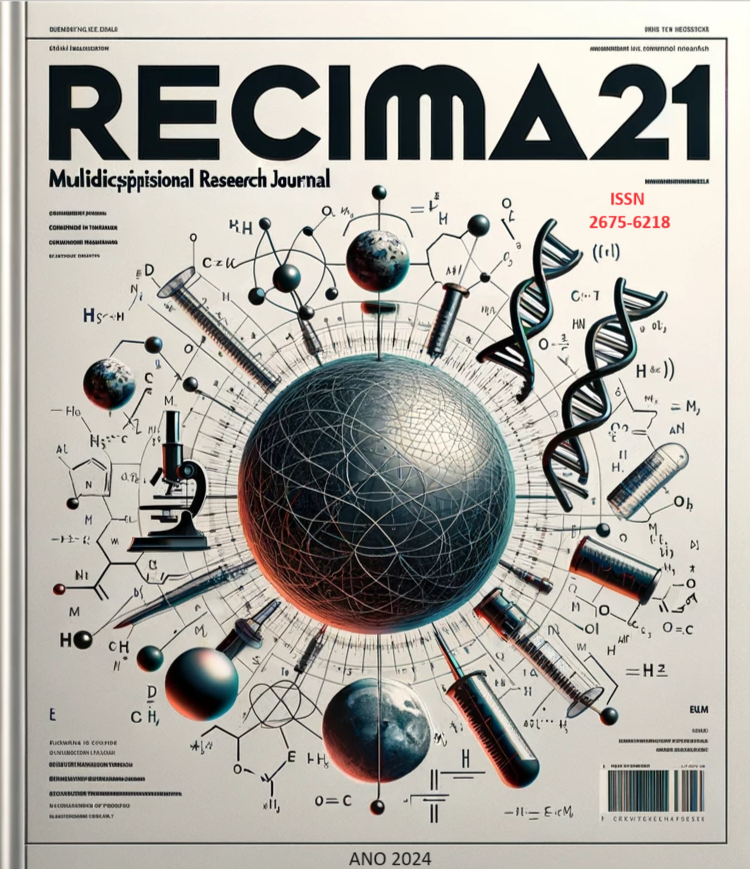PATHOLOGIES IN HISTORICAL BUILDINGS
DOI:
https://doi.org/10.47820/recima21.v5i1.4846Keywords:
Historical buildings, Intervention, Recovery, (Key word: cognitive-behavioral therapy, mental health, pastoral counseling, behavioral distortions, intervention techniques)Abstract
The historical monument aims to revive a past steeped in time. Forgetfulness, lack of use or misuse during this time bring damage if not repaired can bring the collapse of this monument leading it to ruin. Hence, there is the need for tipping and intervention. A satisfactory intervention restores the basic values of patrimony, reveals and value what is exceptional, remove what is harmful and only reconstructed from evidence and safe materials. According to the level of preservation and the degree of tipping, there are types of interventions that can be made in the property. They are restoration, consolidation, conservation, reconstruction and rehabilitation. This work is intended to indicate the origins of pathologies and indicate suggestions to recovery works. They are based on the diagnosis and survey, knowing and analyzing the whole building, under historical, aesthetic, artistic, formal and technical aspects. From this diagnosis will be correlated forms of pathologies and the level of intervention to be performed, useful data in the restoration executive projects and work recovery.
Downloads
References
CZAJKOWSKI, J. Guia da arquitetura colonial, neoclássica e romântica no Rio de Janeiro. Rio de Janeiro: Editora Casa da Palavra, 2000. p. 13.
INSTITUTO DO PATRIMÔNIO HISTÓRICO E ARTÍSTICO NACIONAL. Disponível em: http://portal.iphan.gov.br/. Acesso em: 03 fev. 2014.
INSTITUTO ESTADUAL DO PATRIMÔNIO CULTURAL. Tombamento do antigo convento do Carmo, localizado à Praça XV, nº 101. Centro, Rio de Janeiro. Número do processo: E18/001.3232008, 2008.
LERNER, D.; BITTENCOURT, M. Patrimônio cultural: guia dos bens tombados pelo Estado do Rio de Janeiro. Rio de Janeiro: Governo do Estado do Rio de Janeiro, Instituto Estadual do Patrimônio Cultural, 2012.
MARQUES, M. C. Arquitetura, um segmento – Glossário de Cobertura. Belo Horizonte: [s. n.], 1990.
MASCARENHAS, A. Ornatos, restauração e conservação. Fólio, Rio de Janeiro, 2008.
MEC/IPHAN. Pro-Memória Proteção e revitalização do patrimônio cultural no Brasil: uma trajetória. Brasília: MEC/IPHAN, 1980.
NOVO MILENIO. Convento de Nossa Senhora do Carmo. [S. l.]: Novo Milênio, s. d. Disponível em: http://www.novomilenio.inf.br/santos/h0188s.htm. Acesso em: 09 jan. 2014.
SMITH, R. C. A arquitetura civil do período colonial. Arquitetura Civil I. São Paulo: FAUUSP e MEC-IPHAN, 1975. p. 128. (Textos Escolhidos da Revista do IPHAN).
SOUSA, M. A. Tombo dos bens pertences ao Convento de Nossa Senhora do Carmo na Capitania do Rio de Janeiro. In: Anais da Biblioteca Nacional do Rio de Janeiro. Rio de Janeiro, Serviço Gráfico do Ministério da Educação, 1939. p. 174-400. Volume LVII.
VASCONCELOS, S. Arquitetura no Brasil: Sistemas Construtivos. 5. ed. Belo Horizonte: Ed. Roma, 1979.
WIKIPÉDIA. Convento do Carmo (Rio de Janeiro). [S. l.]: Wikipédia, 2016. Disponível em: https://pt.wikipedia.org/wiki/Convento_do_Carmo_(Rio_de_Janeiro).
Downloads
Published
How to Cite
License
Copyright (c) 2024 RECIMA21 - Revista Científica Multidisciplinar - ISSN 2675-6218

This work is licensed under a Creative Commons Attribution 4.0 International License.
Os direitos autorais dos artigos/resenhas/TCCs publicados pertecem à revista RECIMA21, e seguem o padrão Creative Commons (CC BY 4.0), permitindo a cópia ou reprodução, desde que cite a fonte e respeite os direitos dos autores e contenham menção aos mesmos nos créditos. Toda e qualquer obra publicada na revista, seu conteúdo é de responsabilidade dos autores, cabendo a RECIMA21 apenas ser o veículo de divulgação, seguindo os padrões nacionais e internacionais de publicação.













